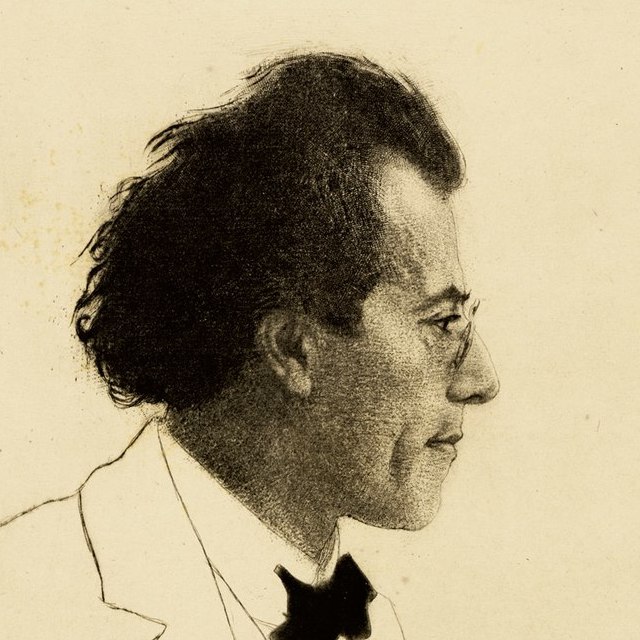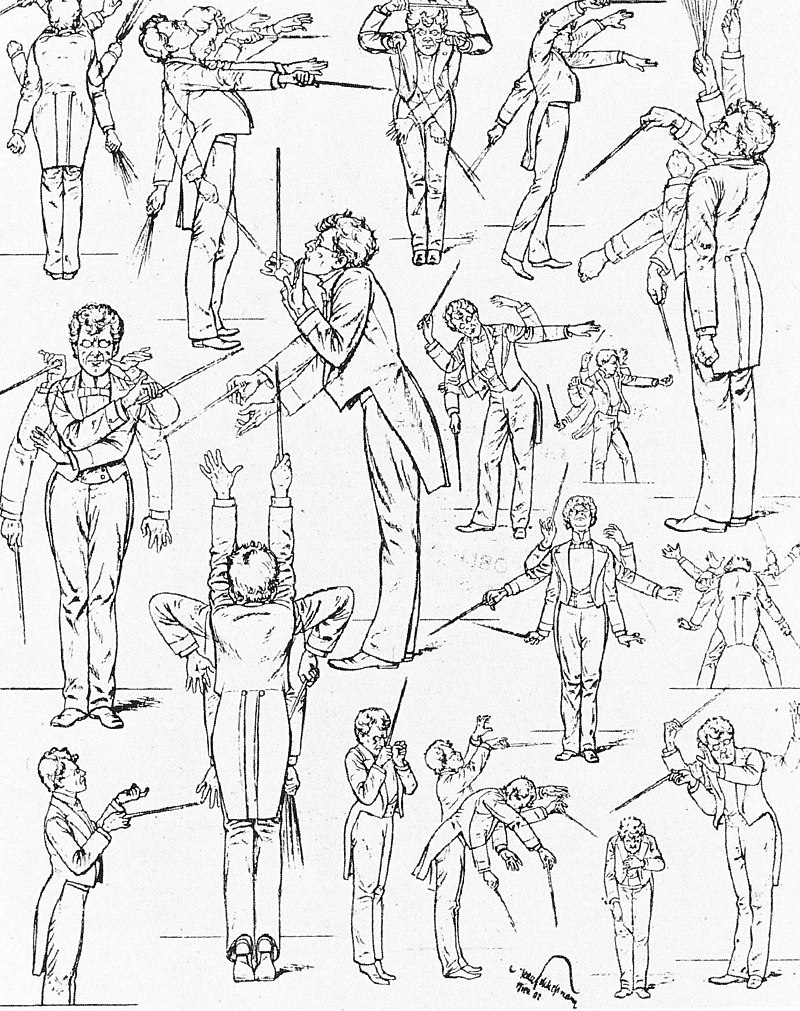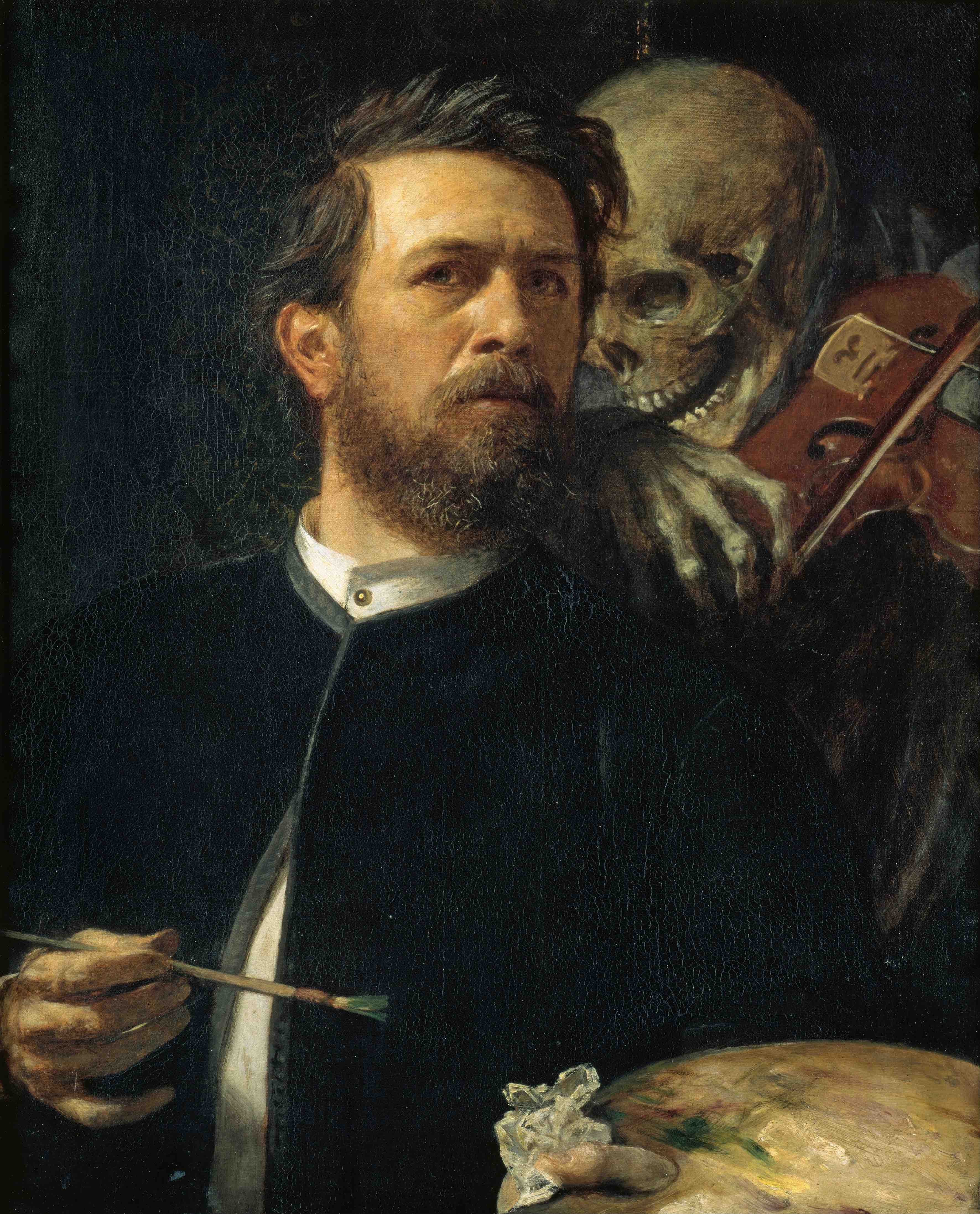Madison
Symphony Orchestra Program Notes
March
19, 2023
One of
our more popular features over the past few seasons
have been presentations in
the Beyond the Score® series developed by the Chicago
Symphony Orchestra. These
innovative programs combine live actors, multimedia,
and the orchestra to
present deep and entertaining background on a featured
work—followed by
performance of the full work. At this program, led by
our Associate Conductor,
Kyle Knox, actors James Ridge, Colleen Madden, and
Gavin Lawrence from American
Players Theatre will be on stage for the story of
Mahler’s joyous Symphony No.4.
Soprano Emily Secor will
sing the final movement: a song describing a child’s
colorful vision of Heaven.
 Mahler’s
Symphony No 4,
the smallest and most joyful of his symphonies, was
completed during his
stressful first years as conductor of the Vienna
Philharmonic.
Mahler’s
Symphony No 4,
the smallest and most joyful of his symphonies, was
completed during his
stressful first years as conductor of the Vienna
Philharmonic.
Gustav Mahler
Born: July 7,
1860, Kalischte, Bohemia.
Died: May 18,
1911, Vienna, Austria.
Symphony No. 4 in G Major
-
Composed: Mahler composed the fourth movement in 1892. The opening three movements were written during the summers of 1899 and 1900.
-
Premiere: November 23, 1901 in Munich, with Mahler conducting the Kaim Orchestra.
-
Previous MSO Performance: 1969 (with Bettina Bjorksten as soloist), 1985 (Lorna Haywood), 1998 (Helen Donath), and 2016 (Alisa Jordhelm).
-
Duration: 57:00.
Background
Des
Knaben Wunderhorn (The
Boy’s Magic Horn), a collection of folk poetry, had a
profound effect on Mahler.
He set several of these poems to music early in his
career, and the poems were
in the background of the first four of his symphonies,
including the vocal
finale of the fourth.
Mahler’s fourth symphony represents a
kind of peaceful
interlude in his series of works: not only is it
something of a miniature by
Mahler’s standards (a work of less than an hour’s
duration, scored for a
relatively modest orchestra), it is almost completely
upbeat and joyful. This
is not the fierce, triumphant joy that closes the second
symphony, nor is it
the exaltation that ends the third—here, it is a simple,
childlike joy that
pervades most of the symphony and reaches its purest
expression in the fourth
movement’s song.
 This
joy does not reflect the stress of Mahler’s life at the
time. In 1898, he accepted the post of Music Director
for the Vienna
Philharmonic, at that time the best orchestra in the
world. Mahler had converted
to Catholicism as part of his campaign for this
position, but antisemitism
remained a hindrance throughout his time in Vienna. His
authoritarian style did
not please the musicians, and his unorthodox and highly
personal
interpretations drew fire from conservative Viennese
critics. The upside of all
this controversy was that ticket revenues soared, and
that management loved
him! He eventually resigned his post in 1901. Mahler’s
output as a composer
fell in 1898, even during his preciously-guarded summer
holiday. In the summer
holiday of 1899, however, he had a burst of creativity
and sketched out much of
the opening three movements, finishing them the
following summer.
This
joy does not reflect the stress of Mahler’s life at the
time. In 1898, he accepted the post of Music Director
for the Vienna
Philharmonic, at that time the best orchestra in the
world. Mahler had converted
to Catholicism as part of his campaign for this
position, but antisemitism
remained a hindrance throughout his time in Vienna. His
authoritarian style did
not please the musicians, and his unorthodox and highly
personal
interpretations drew fire from conservative Viennese
critics. The upside of all
this controversy was that ticket revenues soared, and
that management loved
him! He eventually resigned his post in 1901. Mahler’s
output as a composer
fell in 1898, even during his preciously-guarded summer
holiday. In the summer
holiday of 1899, however, he had a burst of creativity
and sketched out much of
the opening three movements, finishing them the
following summer.
One of Mahler’s inspirations in this
period was Des
Knaben Wunderhorn (“The Boy’s Magic
Horn,” 1805-1808) a collection of German folk-poetry,
collected and heavily edited
by the German poets Achim vom Arnim and Clemens
Brentano, together with some of
their own poems. These texts, filled with folk-religion
and fairytale
imagery—an idealized version of country life—were hugely
popular among the
German Romantics. Several composers, Weber, Mendelssohn,
Schumann, and Brahms
among them, set Wunderhorn
texts to
music. But the collection was a particularly powerful
source of inspiration for
Mahler, generating several song-settings and playing a
role in the creation of
his first four symphonies, three of which include solo
settings of Wunderhorn
poems. These texts seem to
have had a special significance for Mahler, who viewed
these simple, sometime
naïve poems as symbolic of events in his own life.
The three movements written in
1899-1900 were composed to
complement a work written some eight years earlier. In
1892, Mahler wrote an
orchestral setting of the poem Das
himmlische Leben (“The Heavenly Life”) from the Wunderhorn collection. His setting of this
poem went through two
different incarnations before it found a home in the Symphony No.4. It was originally an
independent song for soprano
and orchestra, but then in 1896, Mahler included the
piece as the seventh
movement of his enormous Symphony No.3,
with the title “What the Child Tells Me.” He abandoned
this plan, and set the
movement aside. It eventually found a home as the core
of Symphony No.4. The opening three movements
serve as preparation for
this sublime song—according to Mahler: “In the first
three movements, there
reigns the serenity of a higher realm, a realm strange
to us, oddly
frightening, even terrifying. In the finale, the child,
who in his previous
existence belonged to this higher realm, tells us what
it all means...”
What You’ll Hear
The symphony is in four movements:
• A large opening movement
that develops two distinct themes in an innovative way.
• A rather sinister scherzo,
featuring the solo violin in the guise of a demonic
fiddler.
• A tranquil slow
movement.
• The concluding movement
is a song for solo soprano, setting a poem from the Wunderhorn collection.
The opening movement is set in an
unorthodox sonata form. The
opening bars set a pastoral mood with a chirping
combination of flutes and
sleighbells—a motto that serves to mark off the sections
of this form, and
which will reoccur in the finale. The exposition
continues in perfectly
Classical form, as two main ideas are introduced. The
first of these is a
lilting melody introduced by the strings and picked up
by the solo horn and
woodwinds. The second, much more sonorous and flowing,
is heard in the cellos. A
wry little episode for oboe, bassoon, and clarinet
rounds off the exposition,
and the sleigh bells begin a lengthy development section
which works out the
material laid out previously, and moves gradually
towards one of the few
forceful moments in the symphony, led by the trumpets—a
moment that quickly
subsides. The recapitulation, also signaled subtly by
the motto, brings back
the main thematic material, but out of order and in
transformed fashion. The
clearest statement of the opening theme is reserved for
the very end, just
before a brief, sparkling coda.
Death Playing the Fiddle, 1872
 Mahler’s original title for the
second movement was Freund Hein spielt
auf (“Friend Hein
plays”). Hein, a figure from Austrian folktales, was a
demonic fiddler who led
people into Hell with his playing. Also in the
background of this deliberately
spooky movement is a self-portrait by the Romantic
painter Arnold Böcklin, a
picture that shows the artist listening as the figure of
Death fiddles just
behind his shoulder. True to the subject-matter, much of
the scherzo is carried
by fiddling from a solo violin. (Mahler directs that the
violinist tune all
strings a whole-step high, and play “like a country
fiddler,” creating a
deliberately shrill effect.) This
brilliantly-orchestrated movement is a series
of contrasts between the slightly macabre music of the
scherzo and contrasting
episodes of lighter character.
Mahler’s original title for the
second movement was Freund Hein spielt
auf (“Friend Hein
plays”). Hein, a figure from Austrian folktales, was a
demonic fiddler who led
people into Hell with his playing. Also in the
background of this deliberately
spooky movement is a self-portrait by the Romantic
painter Arnold Böcklin, a
picture that shows the artist listening as the figure of
Death fiddles just
behind his shoulder. True to the subject-matter, much of
the scherzo is carried
by fiddling from a solo violin. (Mahler directs that the
violinist tune all
strings a whole-step high, and play “like a country
fiddler,” creating a
deliberately shrill effect.) This
brilliantly-orchestrated movement is a series
of contrasts between the slightly macabre music of the
scherzo and contrasting
episodes of lighter character.
In comparing the second and third
movements, Mahler wrote: “The
scherzo is so uncanny, almost sinister, that your hair
may stand on end. Yet in
the following Adagio,
where all
complications are dissolved, you will feel that it
really wasn’t all that
sinister...” This quiet and serene movement is a pair of
interlocked
theme-and-variations forms, one dominated by string
sonorities and the other by
woodwinds. The movement explodes briefly with trumpets
and horns at the end,
but is quickly hushed. The
fourth
movement follows after a brief pause.
The culmination of this work,
Mahler’s setting of Das himmlische
Leben, is simplicity
itself. The stanzas of the poem are set in an
uncomplicated strophic form: essentially
the same music with some variation for each stanza of
poetry. This poem seems
to call for a very direct setting, with its innocent
images of a heaven
populated by friendly saints, where the tables are
overflowing with the best
food (a Romantic German take on The Big
Rock Candy Mountain!), and where heavenly music
resounds. The movement
begins with a clarinet solo, which introduces the tune
sung by the soprano. After
the opening stanzas, the orchestra enters with a
frantic-sounding version of
the first movement’s motto. The next stanzas, dealing
with the death of St.
John’s “little lamb” (Christ), are set in a minor key
and again set off by a
statement of the motto. Major tonality returns again for
the stanzas detailing
the heavenly feast, which are punctuated by woodwind
motives. After a brief
moment the motto returns, but the orchestra continues
with a quiet passage that
leads into the final stanzas, now in a luminous E
Major—this serene mood
remains until the final chord quietly dies away.
________